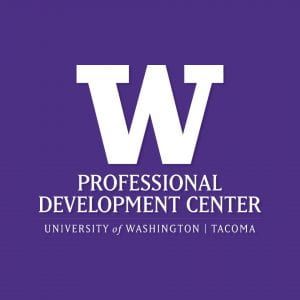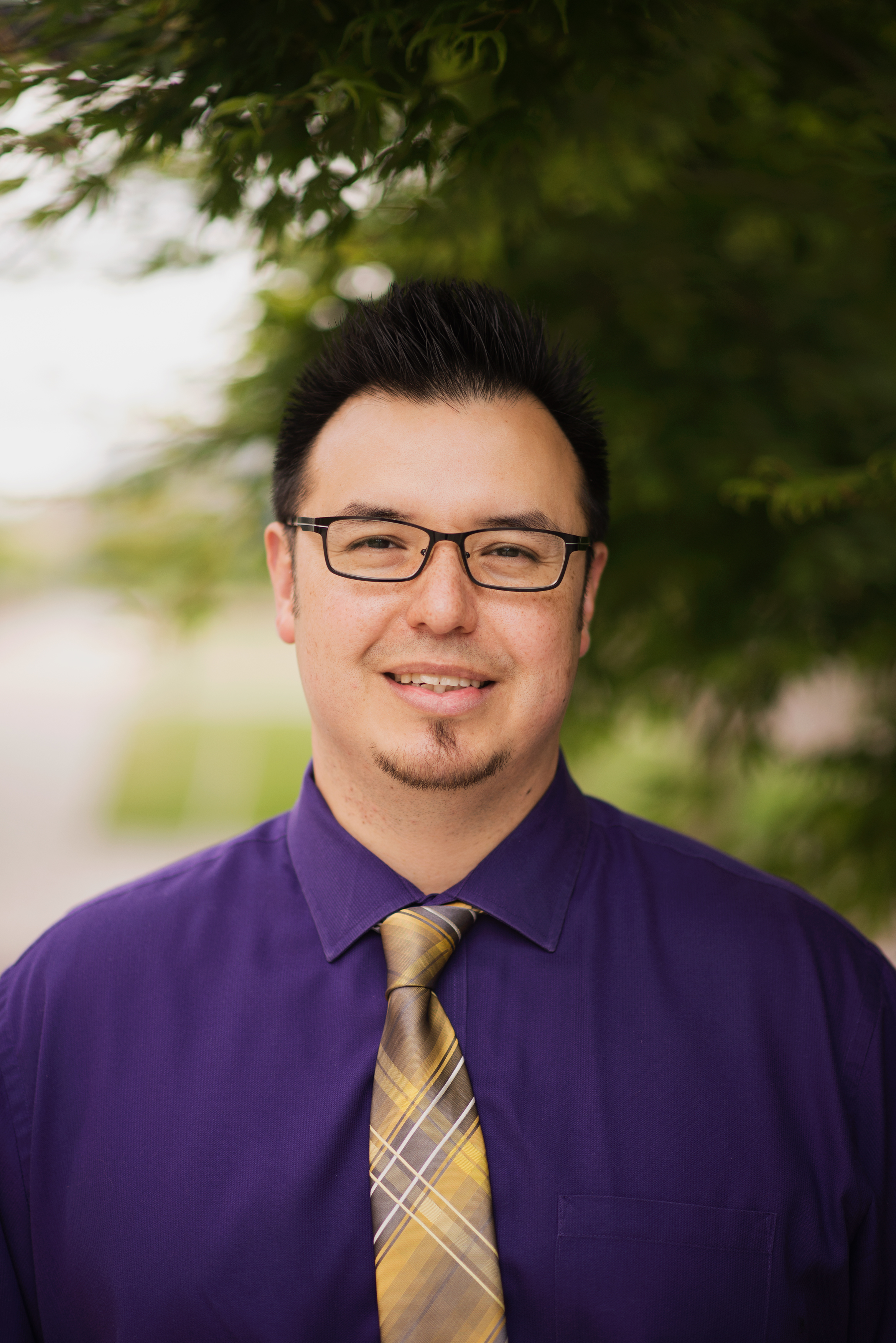[Meet the Instructors is a series intended to introduce you to one of the greatest resources the University of Washington Tacoma Professional Development Center has to offer: its diverse team of veteran, industry-tested professionals. The Center’s professional development programs are designed to be rewarding, challenging and cutting-edge. Our instructors play no small part in that, ensuring students are exposed to the most current industry trends while remaining well-versed in the tried-and-true best practices of their professions. We’re excited to share our instructors with you, and their stories are a great place to start.]
UW Tacoma Lean Six Sigma instructor Nathan Navarro did not always plan on teaching. His career actually started in retail, here he steadily worked his way up from pushing carts to sales, to marketing and eventually into management. When The Boeing Company opened a facility at Kelly Air Force Base in San Antonio, Texas, he started work there as an aircraft painter and sealer, refurbishing military aircraft. It was an experience there that set Navarro’s path toward the classroom.
“We had an all hands meeting one day where they announced they would be handing out pink slips that day – no warning notices, no three months,” said Navarro. “I saw mechanics with tears in their eyes, pushing their tool boxes out of the door, so that made an impact.”
Navarro was spared from that round of lay-offs, but the experience of seeing people lose their jobs unexpectedly encouraged him to prepare for the future.
“I said to myself, ‘I have three kids; I need something to fall back on,’” he said. “So I decided to start doing continuing education.”
The classroom was not the only place where Navarro found ways to get ahead. Around that same time, a Lean practitioner showed up where Navarro worked at Boeing to review some of the company’s processes.
After observing work at Boeing, the Lean practitioner found waste in some of the company’s processes. At that time, Navarro did not know much about what Lean methodology was, or what it meant by “waste.”
Years later, you could call him an expert on both.
Navarro’s manager sent him to Lean training, where he learned the basics of continuous improvement and brought it back to self-directed teams at Boeing. After working with self-directed teams in Texas, Navarro moved on to a Boeing facility in Everett, Wash. In Washington, Navarro worked in a brand new self-directed work team program aimed at facilitating process improvement for mechanics, supervisors, accountants, finance, and the company’s leadership.
While working at Boeing, Navarro continued to pursue education. He earned an MBA and completed a Lean Six Sigma: Green Belt program at the UW Tacoma Professional Development Center. Though he went into his Green Belt program with experience in process improvement, the realm of Lean Six Sigma was new to Navarro. Lean Six Sigma is a combination of two process improvement methodologies: Lean and Six Sigma.
Navarro practiced mixed martial arts when he was in high school. He said Lean Six Sigma is an application of continuous improvement he immediately appreciates because the methodology incorporates the best practices of other traditional improvement approaches. “I really liked the combination of Lean and Six Sigma,” said Navarro. “It makes me think of a mixed martial arts of continuous improvement. It’s not just grabbing everything of Lean and Six Sigma and shoving it inside of a box; Lean Six Sigma grabs the best efficient and practical tools of both methods.”
Navarro continued at UW Tacoma, finishing his Green Belt and moving on to Lean Six Sigma: Black Belt. In addition to helping his career – Navarro was promoted to a management position at Boeing, deploying and implementing continuous improvement programs around Puget Sound – going to school at UW Tacoma led him to another revelation.
“Instead of becoming an executive at Boeing I wanted to teach – to help people reach their dreams,” he said.
So, Navarro did just that. Learning that the Professional Development Center had an opening for a Lean Six Sigma instructor, he applied and was offered the position.
At the Professional Development Center, many students have been working professionally for a number of years. In class, Navarro tries to make the best of his students’ experiences.
“If you have prior experience, bring it to the table and let’s learn,” he said. “I have had some students with Lean experience– Lean practitioners, coming to UW Tacoma to learn more.”
“The courses I teach are not just about lecturing – we’re actually rolling up our sleeves in class and working real project improvements,” he said.
Classes contain students from across the professional spectrum, said Navarro. Lean Six Sigma students often work in manufacturing, retail, medical, nonprofit, and government professions. What unites them all is recognizing the importance of providing higher quality services or products at a rate that help make them competitive, or in the public sector, more efficient.
“LSS is a method and a mindset on how you approach making your day-to-day tasks efficient, productive and powerful,” said Navarro.
Navarro continues to practice what he preaches, too. True to the spirit of Lean Six Sigma, he continues to find way to continuously improve his work. He has recently left Boeing to start a new position as a Senior Continuous Improvement Analyst at Seattle City Light. Working in government, Navarro is applying his expertise in a new way.
“Government agencies are often understaffed and overloaded with work due to budget cuts and overcomplicated work systems,” he said. “In addition, most of the inefficient tasks (wastes) in government agencies are hidden. It’s not like in the manufacturing environment where you can walk around the workplace and quickly observe piles of inventory stacked up between processes, or observe a pile of parts that have been thrown away because of poor quality.”
“Unfortunately, because many of the wastes are hidden, employees often are the first to be blamed for process related issues. Eliminating the hidden process inefficiencies will improve quality, reduce processing cost, speed up delivery of services, make the working environment safer and improve employee morale,” he said.
In the classroom, too, Navarro is constantly seeking improvement.
“Being a practitioner of what I teach enables me to turn continuous theories into practical application. Through the continuous practice and application of Lean Six Sigma I have been able to determine firsthand what works and what doesn’t in different businesses as well as within different working environments. This allows me to relate to my students who work in manufacturing, retail, government, medical, military and other service departments,” he said. “I’m always looking for ways to improve my teaching – not just my style, but the content: engagement, timeliness, quality.”
He is happy to continue that work at UW Tacoma.
“The philosophy is what sets UW Tacoma apart. I’m very, very proud to be teaching at UW Tacoma,” said Navarro. “The philosophy that sets the university apart – the philosophy that captured me as a student – is measuring success through students’ ability to demonstrate proficiency.”
“My objective for students is to build their confidence with the tools, have a reference guide and prepare them to be able to plug and play into any organization,” he said.
Lean Six Sigma is a business and data-driven, disciplined approach to reducing waste and minimizing defects in any type of process (be it manufacturing or services). Lean Six Sigma focuses on reduction of waste, increased profitability, and customer satisfaction. Click here to learn more about Lean Six Sigma at the UW Tacoma Professional Development Center.

